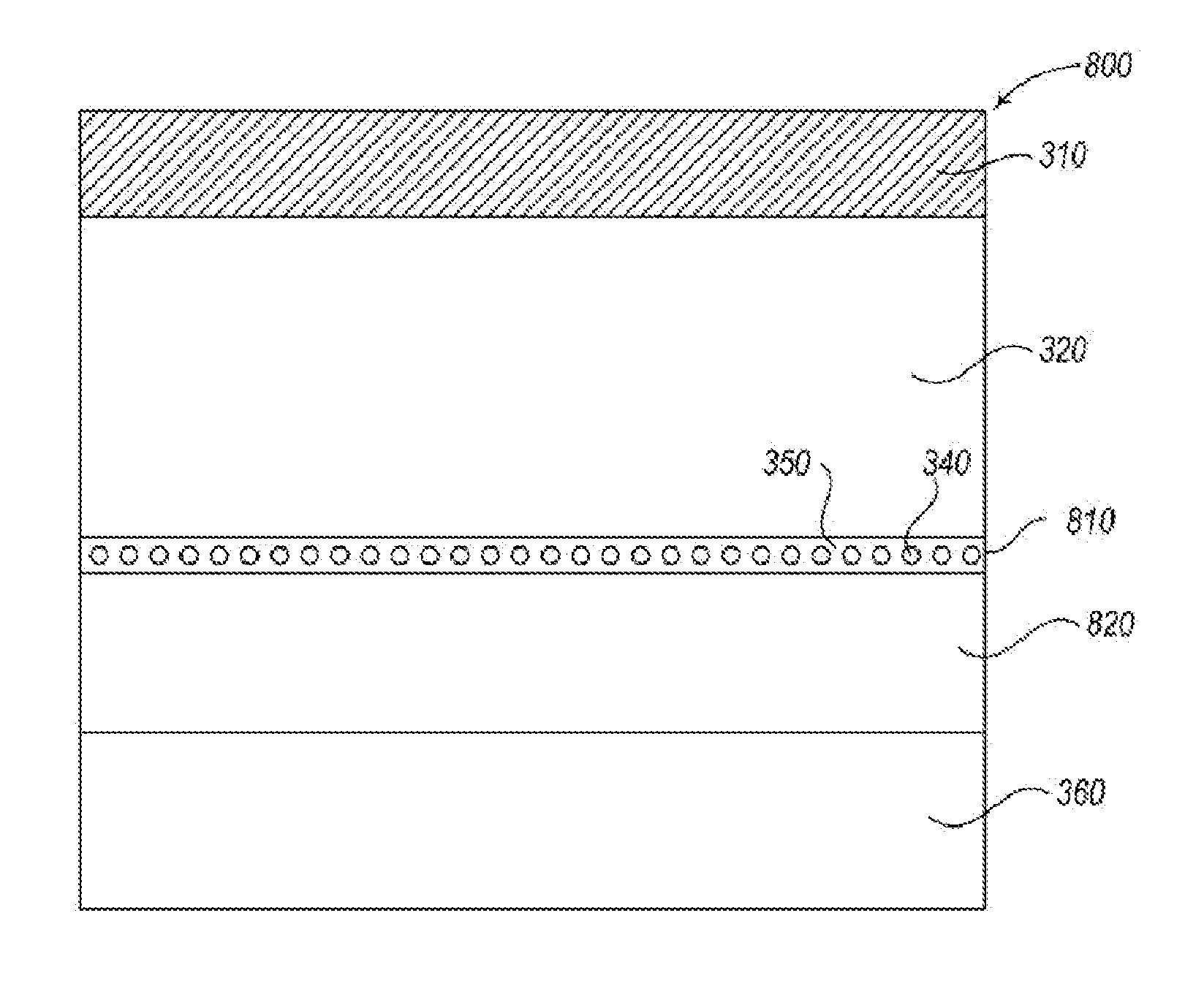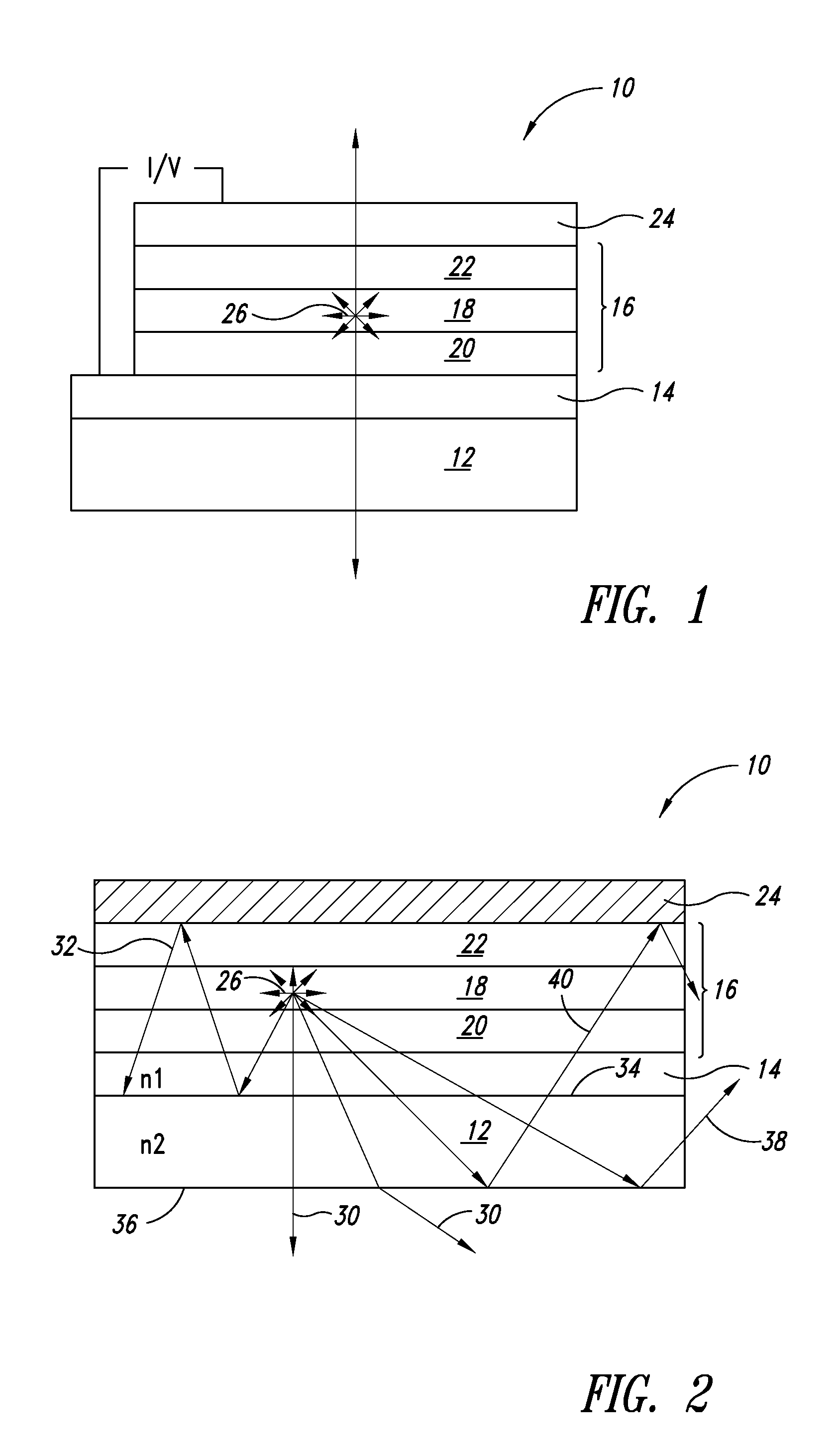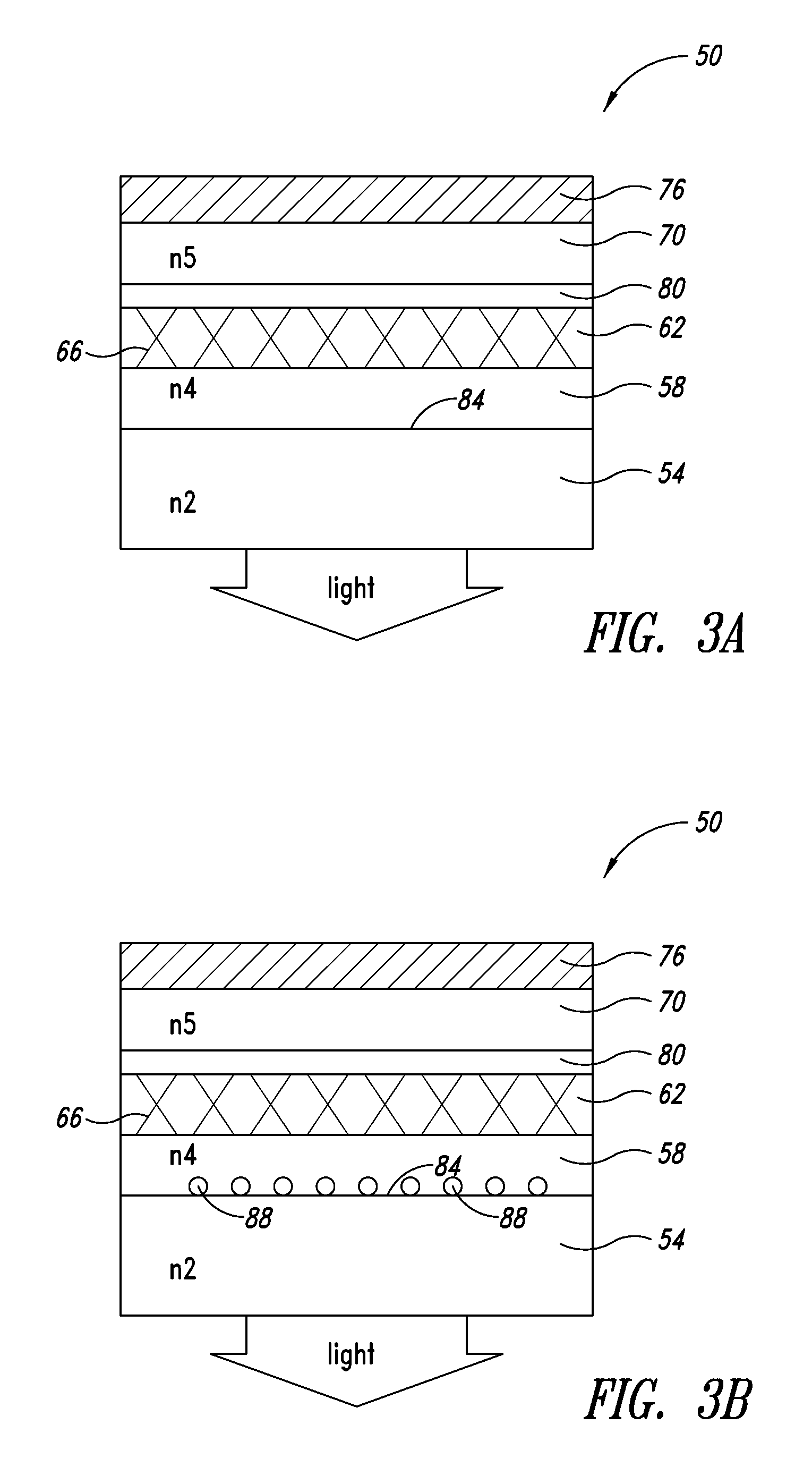Opto-electrical devices incorporating metal nanowires
a technology of metal nanowires and opto-electric devices, which is applied in the direction of thermoelectric devices, sustainable manufacturing/processing, and final product manufacturing, etc., can solve the problem that not all the light generated from the organic stack is capable of being generated via the external mode, and achieve the effect of improving light out-coupling
- Summary
- Abstract
- Description
- Claims
- Application Information
AI Technical Summary
Benefits of technology
Problems solved by technology
Method used
Image
Examples
example 1
Synthesis of Silver Nanowires
[0154]Silver nanowires were synthesized by the reduction of silver nitrate dissolved in ethylene glycol in the presence of poly(vinyl pyrrolidone) (PVP) following the “polyol” method described in, e.g., Y. Sun, B. Gates, B. Mayers, & Y. Xia, “Crystalline silver nanowires by soft solution processing,” Nanoletters 2(2): 165-168, 2002. A modified polyol method, described in co-pending and co-owned U.S. patent application Ser. No. 11 / 766,552, produces more uniform silver nanowires at higher yields than does the conventional “polyol” method. This application is incorporated by reference herein in its entirety. Resulting nanowires primarily had lengths from about 13 μm to about 17 μm and diameters from about 34 nm to about 44 nm.
example 2
Standard Preparation of Coating Composition of Conductive Nanostructures
[0155]A typical coating composition for depositing metal nanowires comprises, by weight, from 0.0025% to 0.1% surfactant (e.g., a preferred range is from 0.0025% to 0.05% for ZONYL® FSO-100), from 0.02% to 4% viscosity modifier (e.g., a preferred range is 0.02% to 0.5% for hydroxypropyl methylcellulose (HPMC), from 94.5% to 99.0% solvent and from 0.05% to 1.4% metal nanowires.
[0156]The coating composition can be prepared based on a desired concentration of the nanowires, which is an index of the loading density of the final conductive film formed on the substrate.
[0157]The coating composition can be deposited on a substrate according to, for example, the methods described in co-pending U.S. patent application Ser. No. 11 / 504,822.
[0158]As understood by one skilled in the art, other deposition techniques can be employed, e.g., sedimentation flow metered by a narrow channel, die flow, flow on an incline, slit coati...
example 3
[0160]A polyimide coating solution (e.g., SUNEVER Polyimide (type 0821)) was first deposited on a substrate, spun on at 1500 rpm, followed by drying at 90° C., and curing for 30 min at 200° C. The haze and transmission of the resulting sample were 0.1% and 92.1%, respectively. The film thickness was measured at 1.2 microns.
PUM
 Login to View More
Login to View More Abstract
Description
Claims
Application Information
 Login to View More
Login to View More - R&D
- Intellectual Property
- Life Sciences
- Materials
- Tech Scout
- Unparalleled Data Quality
- Higher Quality Content
- 60% Fewer Hallucinations
Browse by: Latest US Patents, China's latest patents, Technical Efficacy Thesaurus, Application Domain, Technology Topic, Popular Technical Reports.
© 2025 PatSnap. All rights reserved.Legal|Privacy policy|Modern Slavery Act Transparency Statement|Sitemap|About US| Contact US: help@patsnap.com



